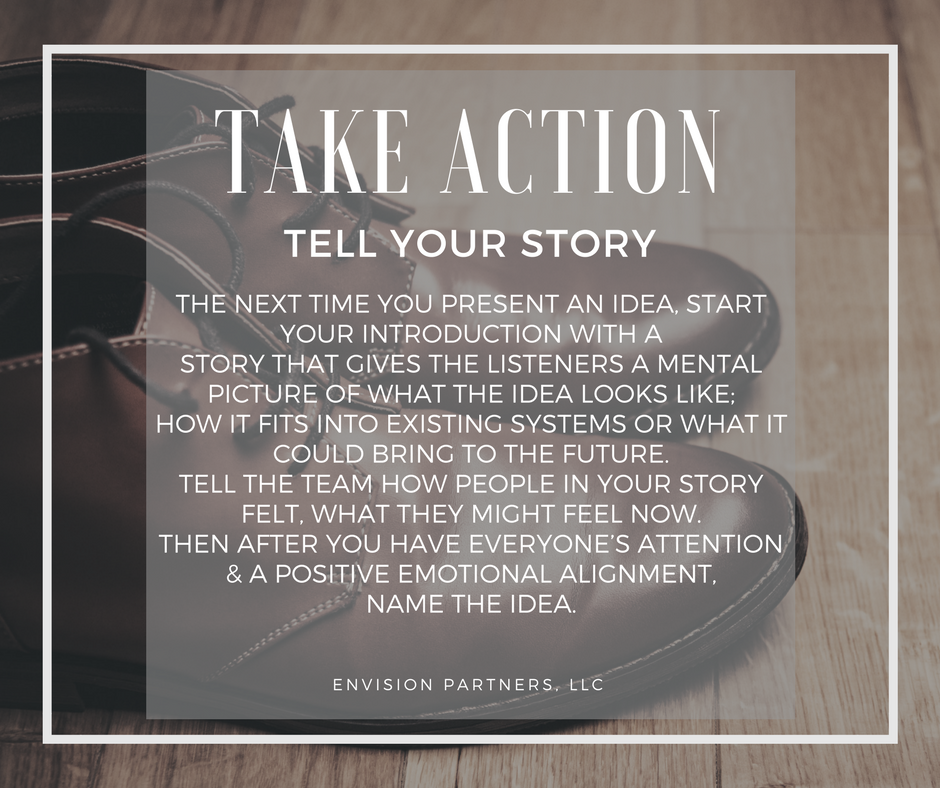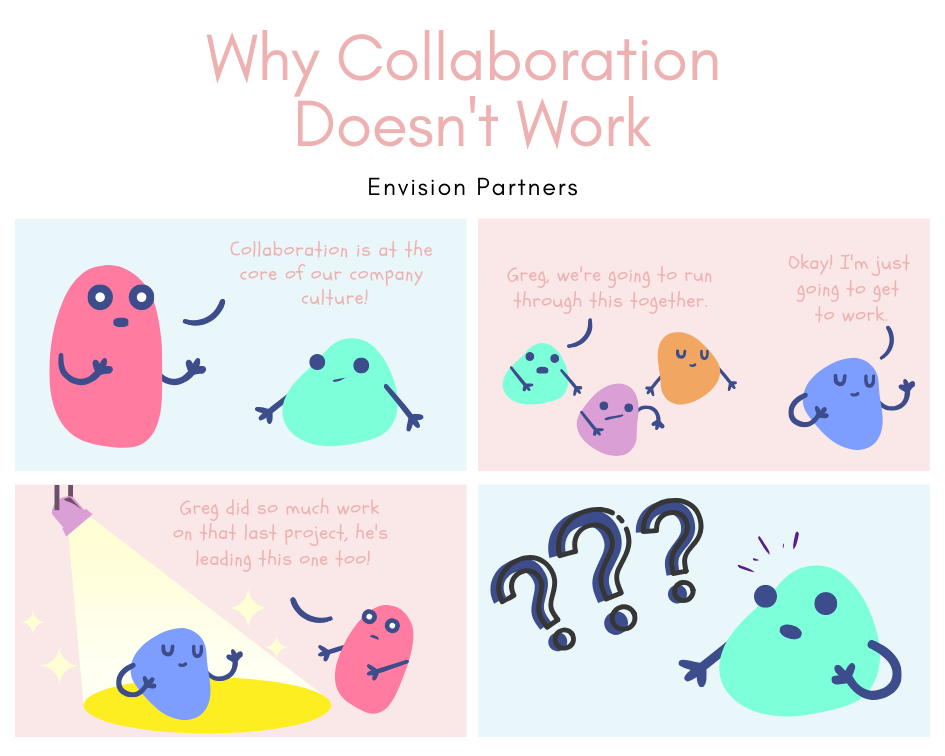Wait For It...
Ricardo was dreading bringing up another new idea in the leadership team meeting. The conversations were always the same. Meetings started with someone introducing a new process or system they thought would increase their department’s large-client sales—the primary strategy identified for increasing annual revenue. After a new idea was introduced, it would be debated until it died a slow beaten-down death. The person who had introduced the idea left deflated and everyone else felt good that they had just prevented disaster.
Even though everyone agreed on the strategy, they were now in the third quarter and they still could not come to agreement on how to execute. Whenever someone shared an idea the conversation would go to all of the uncertainty as to whether this was the best idea, and it was easy to come up with a list of reasons why the solution might not work. This way of introducing ideas led to the idea owner taking the defensive against, usually, the rest of their peers.
Ricardo had a lot experience in large-client sales in another department. He was a team player and not averse to throwing out creative solutions to be knocked around by the team. However, over 7 months, he has been unable to get any of his ideas to get traction. Ricardo was tired.
In a bit of an epiphany, Ricardo realized that he was spending all of his time being reactive and very little time being proactive. Following his introduction, Ricardo, would ask for feedback and then proceed to defend his idea. Upon reflection of a recent meeting, he realized that most of the discussion was about why the assumptions of his peers were incorrect, rather than any discussion of how the idea might be put into action.
Mentally, upon the introduction of an idea, meeting participants form a story about the idea. A story is a mental framework for connecting ideas and remembering details. When we don’t have all the details we are able to fill them in with stories of similar experiences. Unfortunately, when we are faced with a threat, like change, we tend to fill in the gaps with negative memories to create a pretty downer storyline. The self-created narrative includes concepts about how the idea would not work; the problems we would face, the negative ripple effects and the extra work it would cause. Stories are emotional. The emotion makes the story feel real, even if it didn’t happen and we only imagined it.
Ricardo has already built a story in his mind as to how the idea would look. However, at the meeting and given only the new idea, his peers had only a few moments to quickly build a story of their own—and it’s likely not the same one as Ricardo or other team members. The barrier to agreement then becomes an emotional barrier, not a logical one. Whose story is more convincing? I believe my story–it’s true–even though it’s imagined. Ricardo might use his internal story in short bursts during his defense. However, he is now essentially convincing his peers that their story is wrong and that his story is right. Letting go of one way of believing in order to adopt a new way of believing is difficult.
Ricardo had never thought of starting the introduction of his idea with his story. The story Ricardo used began with how he had seen the idea used in a previous department and continued with a description as to how it could be modified to fit in the current department’s product. By making the story interesting and as detailed as possible including adding emotional aspects of the story characters–what troubled them, what motivated them– Ricardo held the listeners’ attention and meanwhile planted a narrative in their mind rather than letting them form their own story. He did not name the idea until he was well into his description of the situation and the conditions. In this way, their emotions were more likely to be aligned before even starting a discussion. That is, an emotion of believing that this idea might work. “Yes, it might need some tweaking, but I think we can try it.”
So, here’s my idea. In the next meeting you’ve got this week, start your introduction with a story that gives the listeners a mental picture of what the idea looks like; how it fits into existing systems or what it could bring to the future. Tell the team how people in your story felt, what they might feel now. Then after you have everyone’s attention and a positive emotional alignment, name the idea.











A 3-step process to help you and your employees create lasting behavioral change.